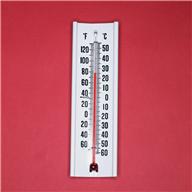As summer approaches and the weather heats up it’s important to remember to keep cool…in the workplace, that is. This week I’m excited to share an article from Angela Fischer, Director of Human Resource Services for MRA, The Management Association, Inc.
Strategies to Keep Your Cool
by Angela Fischer

Angry Birds, the most downloaded game of all time, surfaced a couple of years ago. True devotees flash Angry Birds debit cards, play the board game, and anxiously await the 3D movie. It appears, at least for some people, that frustration and anger evaporate with the catharsis of slingshoting disgruntled birds to obliterate the leering pigs.
While playing Angry Birds might be an occasional release, it’s wise to arm yourself with a variety of strategies to effectively blow off steam. Whether you’re a “slow burner” or a “fast fuse,” attention and practice can help you maintain your cool in challenging situations. Anger is a valuable human emotion, part of the fight-or-flight chemical reaction in our brains that keeps us safe in a threatening situation. But responding with anger to mere irritants or earning and maintaining a reputation as a hot-head isn’t appropriate.
Surprisingly, some psychologists support the value of privately screaming or hitting things without negatively affecting others, but regular physical exercise is more universally recommended. When you come home from work with pent-up frustration or anger, diving into a half-gallon of Haagen Dazs may be far more tempting than putting on your sneakers. But research clearly shows that you’ll feel happier and more relaxed after exercise because of the chemicals your brain releases. The best news is that there’s no need to become a marathon runner. Simple walking is a proven release.
Since it’s not always realistic to go for a walk when you’re about to erupt, lean on another powerful, proven technique— delay. Make no immediate response. Count to ten. Or ask, “How about we talk about this in an hour/later today/tomorrow?” That gives you time to internally regroup to address whatever is spurring a potential eruption.
For situations that are consistently challenging, strategize as dieters do. If having M&Ms in the cupboard makes them crazy until they eat every last one, dieters often banish M’s altogether or learn to substitute a different activity for eating. Handle anger triggers the same way. Explore solutions you can apply to reduce the triggers, avoid them altogether, or change the way you react to them.
Changing the way you react to a trigger is easier said than done. It takes conscious effort and practice to react differently. If a torrent of angry words is on the tip of your tongue to scold an employee who’s not pulling his weight on the team, an angry outburst often starts with the word you. “You’re not doing your share of the work. Your lack of effort is making me and your team members crazy.” This choice of words, coupled with an accusatory tone, could spark an even angrier reply, escalating the situation further. Instead of using “you” statements, diffuse anger by using “I” statements, making the same point but with less potential for combustion: “I’m concerned about the amount of progress the team is making on this project. I’m upset because, from what I’ve observed, it looks like the other three team members are carrying the ball.”
Understanding anger triggers and taking positive action to control reactions leads to more effective business and personal relationships. Work toward the goal of keeping calm enough to continue to think clearly. American humorist Will Rogers once observed, “People who fly into a rage always make a bad landing.” It’s a lesson for us all.


